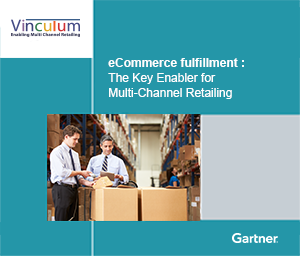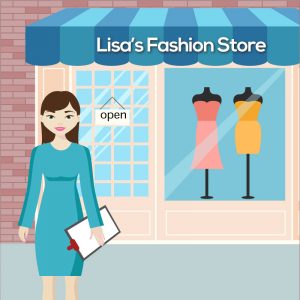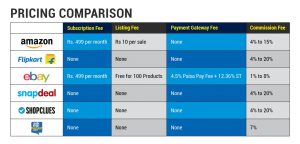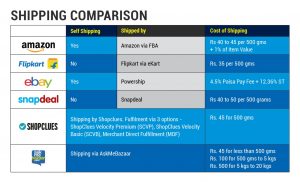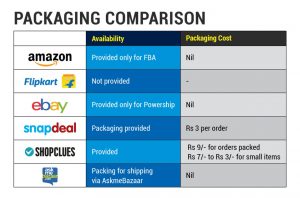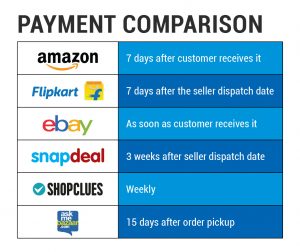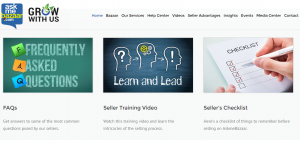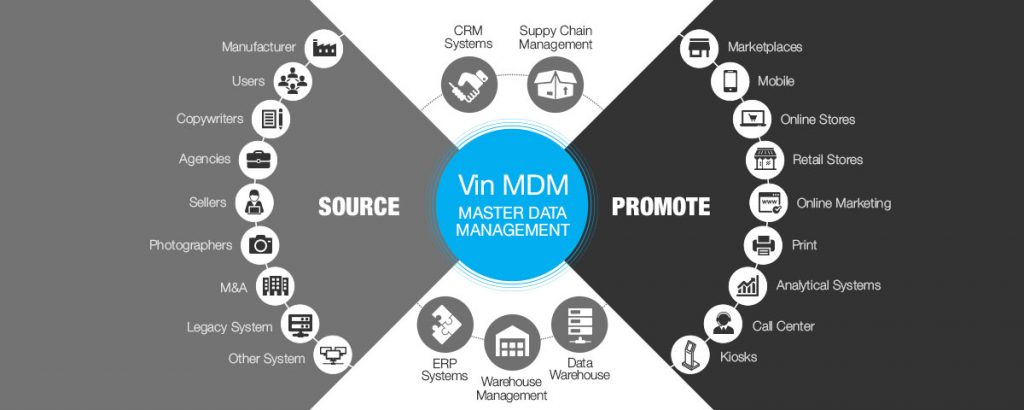How to Sell Online Globally : 3 Steps to Selling Across Borders
Sell Online 101 – Part Seven: How can I sell globally?
Looking to cater your products to International customers! Wondering How?
Why not start selling online across borders to reap the benefits of having an extensive web presence?
Global B2C cross-border e-commerce market is predicted to grow up to $1 trillion in 2020, as per a report from global consulting firm Accenture and AliResearch.
Cross-border online shopping is gaining popularity and is growing with immense pace. This is especially true in emerging markets, where consumers find it hard to afford international products in local shops.
How can you start selling online and reach International Customers?
In this article, we have outlined simple, practical ways by which you can sell overseas with ease.
Choose your markets: To start selling internationally, it is important to know where you want to expand your business. Consider the following factors while making this decision:
- The business size of the region.
- The cultural and language differences.
- The economic and political policy of the country.
- Tariffs on the products you plan to sell.
- The regulations and requirements while selling.
These are important to consider to first picking where to sell.
For example, one of the greatest barriers to selling your products internationally are the country-specific regulations. Every country has a list of regulations for international trade. These regulations include tariffs, duties, taxes, and banned products.
A great resource for checking shipping compliance is to use UPS’s ‘Import Compliance Tool’.This tool allows you to check specifics between your home country and the targeted country.
Do your research: Once you have chosen where to sell, understand the market. This could include doing your research about:
- Goods or services that you can sell – Is there sufficient demand for the products you plan to sell?
- Competitors in the market – Does competition exist in the space you want to sell?
- Shopper Behavior – How are they likely to respond to your products or brands? This is an important aspect of your research. For instance, selling green hats in China will not be a profitable business – it signifies that a man’s wife is cheating on him.Collect data directly from international marketplaces, Contact potential customers and Government representatives. The research can also include news articles, trade statistics, and data from export specialists.
Devise a Strategy – How do you target the market that you have completely researched? What are the channels on which you plan to sell? What is the easiest, most cost-effective way to enter the target market? Here are a few ways by which you can expand into foreign markets –
- Sell on your own website, ship orders internationally – If you have your own web store, your international customers can buy directly from there and you can ship their orders to their international locations.While this option sounds straightforward, the ‘landed’ cost – i.e. the total cost you will pay to have your item arrive at your international customer’s door, can be quite high. This cost includes the price to ship as well as the taxes and duties that will be applied.This is very important for you to know! If you quote shipping at $15 and there is a $30 duty, your customer might not be willing to accept the higher price. In that case, you will be charged the freight and the item will be sent back.
- Sell internationally via a Third-Party Website – There are several options available to ship internationally, via tie-ups. For example, if you wish to ship from a location in the U.S., you can use a third-party service provider like MyAmericanShipper.
- Sell on International Marketplace – You can sell on international marketplaces, such as eBay, Rakuten, Amazon, Lazada, etc.This is by far the easiest and the most pocket-friendly way of expanding internationally.However, ensure that your business complies with rules of the international marketplaces before you can start selling. For example, Rakuten needs sellers to register their business in Japan before they can sell on their marketplace.Before deciding on a particular strategy, weigh all the available options in terms of shipping services (including insurance), payment options, accounting, business insurance, and dealing with returns.
With these 3 simple steps in place, you can begin selling to international customers with ease!
Looking to sell online? With ready integrations to international marketplaces, frontends, and global last-mile fulfillment companies, Vin eRetail eXpress helps you sell across marketplaces, manage orders across multiple channels & fulfill with ease. Get a free trial today!
See how Vin eRetail Express can help you Turbocharge your Online Business –
Any tips or comments for us? Let us know in the section below.
Read More

DTDC powers eCommerce fulfillment with Vinculum’s Cloud-based WMS
DTDC Express Limited, India’s largest delivery network, has been operating for over 25 years across 10,000+ locations.
Apart from being a master at regular courier/parcel delivery service, DTDC is now a major player in the space of eCommerce fulfillment, cross-border eCommerce trade, warehousing and other services that deliver value to their customers.
Our Engagement:
Vinculum is enabling DTDC to complete the entire cycle of eCommerce fulfillment for its clients. Its cloud-based WMS, Vin eRetail WMS is helping DTDC with:
- Integration with multiple channels for order capturing and fulfillment.
- Tracking and Managing Inventory for multiple clients in a single location.
- Deliveries and Reverse Logistics.
- Managing all Warehousing Operations.
- Running multiple warehouse locations in a single instance.
Global Business to Consumer eCommerce sales have witnessed a sharp growth over the last few years. eCommerce fulfillment is critical to enabling this growth. The sector has seen over US$5oo million invested in 2015 by Indian investors alone, with the aim to create 3PLs focussed on eCommerce fulfillment. Read more about how eCommerce fulfillment enables Multi-Channel Retailing here:
Any tips or comments for us? Let us know in the comments below.
Read MoreO2O Transformation Decoded: The Offline-Online-Offline Continuum
The new edition of #DaVinningCode is out!
Launching ‘Bringing Offline and Online together‘,Our Newsletter Edition 2.0 for the eCommerce ecosystem.
What’s Inside:
- Offline to Online Strategy – How Brick n Mortar retailers can increase revenues, leverage partnerships and grow customers.
- Online to Offline Strategy – How Online retailers can go global, and collaborate to increase revenues.
- Current IT Landscape and its challenges– How technology can enable O2O for your organization.
- The O2O Transformation – How you can transform your business and delight your customers
- Latest trends transforming the eCommerce ecosystem
- Featuring insights from Ralali,PurelyB,Fabelio,IvyCap, and Voonik
Get your copy today! Download now here.
Read More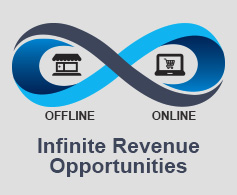

Vinculum showcases its Multi Channel retail solutions at IRCE 2016
Vinculum, a global cloud-based order management, and fulfillment solutions company participated in the Internet Retailer Conference and Exhibition held from Jun 7 to Jun 10 at Mc Cormick Place West, Chicago.
One of the biggest eCommerce conferences in the world, IRCE 2016 was attended by more than 10,000 eCommerce & retail ecosystem participants, facilitating networking, collaboration and knowledge sharing opportunities for retail and allied industries.
According to a recent research, technologies for customer engagement, effective management of multiple sale channels, real-time view of inventory, & order fulfillment remain the top priorities for eTailers.
“Customers have been demanding faster delivery times, and extended ordering window deadlines for next-day and same-day delivery – 31% of shoppers expect expedited shipping options to get orders faster when checking out online and over 45% abandoned a shopping cart due to a shipping time that was too long” says research from UPS & eTailing group.
Vinculum, represented at the event by Annajee Nott (Founder, Vice President, Consulting), Arvind Sahay (Digital Director – MEA) and Greg Emmert (VP Operations for the Americas) showcased how their SaaS-based product suite enables Multi-channel Order Management & fulfillment, and how the ecosystem participants could overcome these challenges.
Vinculum’s product showcase at the event included software to enable Multi-channel Retailing for the eCommerce ecosystem including eTailers, Retailers, Online Marketplaces, and Sellers on these marketplaces and Shipping companies that undertake eCommerce fulfillment.
• Vin eRetail – A SaaS-based Order management & eCommerce fulfillment suite that helps eTailers turbocharge their business, Retailers enable O to O transformation, and Sellers sell online, via ready integrations to Global Marketplaces, front-ends, retail systems & shipping companies.
• Vin eRetail WMS – A SaaS based Warehouse Management software for eCommerce fulfillment for eTailers, Retailers & fulfillment/Shipping companies looking to manage multiple delivery locations, distribution centers & eCommerce order fulfillment.
• Vin PIM was of specific importance for the eTailers, Retailers & Marketplaces looking to provide their customers with a fantastic customer shopping experience. Vin PIM streamlines product information coming from multiple sources & provides consistency across all sales channels enabling organizations to offer customers a great shopping experience.
These products have found a worthy mention in Gartner. Vin eRetail was featured as a Marketplace & Multichannel Integration Platform in Gartner’s Digital Commerce Vendor Guide for 2016. Additionally, it was recognized as one of the global software providers in Gartner’s Market Guide for DOM systems. In 2015, Gartner’s Market guide for Warehousing and Fulfillment Application Vendors featured Vin WMS.Vin MDM & Vin PIM were mentioned in Gartner’s Magic Quadrant for product and customer data solutions in 2012, 2014, and 2015.
Any tips or comments for us? Let us know in the section below.
Read MoreHow to Sell Online on Top Marketplaces
Sell Online 101 – Part Five: How to sell on marketplaces?
Any seller who wants to grow his business can’t ignore the elephants of the eCommerce jungle – The Online marketplaces. While selling on your own store is a great option, it is a good choice to consider selling on marketplaces, as well.
Want to start selling, but don’t know how? Read our post to follow these 3 simple steps.
In our last story, our fashion entrepreneur Lisa decided to go online.
Lisa has a business selling women’s clothing. Year on year, her business has grown to be profitable. After a while, her sales stopped growing. She wanted to increase her profits, scale up her business, and reach more customers. She decided that the best thing she could do was sell online.
She kickstarted her online store by choosing the perfect front-end eCommerce platform for her business. Read the complete story here.
Lisa’s story (continued…)-
Lisa’s store has successfully increased her customer reach – and the profits have grown with it.
And now, like any astute business (wo) man, she’s thinking, “I want more!”
She needs to increase her revenues – and so she wants to sell on online marketplaces.
Her choice of marketplaces includes – Amazon, Flipkart, AskmeBazaar, eBay, Lazada, Snapdeal – and the list is never ending.
What does she have to gain by selling on marketplaces?
Top Benefits of selling on Marketplaces:
• Reduced Marketing Costs – By listing on a marketplace, she will not have to spend time and resources building her own brand. This will allow her time to focus on her core capabilities – such as assortment, pricing etc. of her products. Marketplaces like Amazon and eBay have a high customer reach, and this will give Lisa’s products visibility from day one.
• Setup Costs – By listing on marketplaces, Lisa only has to pay when she receives the order. However, if she has her own store – she will have to pay for setup – the platform, themes, customizations, advertising, etc. even when the order volumes are low.
• Ease of setting up operations – Easy to setup and get going –she can start right away; all she needs to do is register, list products and sell. This is one of the reasons why selling online on marketplaces such as Amazon and eBay is such a popular option for most business owners.
• Sell Globally – Marketplaces are global – which means she can be too! Selling on marketplaces is one of the fastest and most convenient ways of going cross border. For instance, online marketplaces like Amazon can help you sell to its booming market in the United States – given its wide reach in the area.
• Hassle free selling – Most marketplaces provide support to operational hassles that sellers face, all for a small fee. For instance, sellers who sell on Amazon without fulfillment capabilities have the option to get their orders Fulfilled by Amazon (FBA). Amazon takes the order end to end, providing the seller with a simple, easy way to sell. Similarly, most marketplaces today have a Fulfilled by Flipkart, Fulfilled by Snapdeal etc. options etc.
• Profits, profits, profits – Selling on a marketplace is the easiest, quickest way to start selling with minimal costs. Their wide customer base means that revenue growth with larger volumes of orders and increased sales.
So there is a host of benefits to selling online on marketplaces, but how does she choose a marketplace which best suit her objectives?
To choose the right marketplace that addressed her business needs, there are several factors she needed to keep in mind, like pricing, shipping, payment policies, etc.
Lisa compiled a comparison list of marketplaces to make her choice –
PRICING –
Each marketplace has its own pricing structure. Depending on their guidelines, they may charge–
• Monthly Subscription Fee – Most marketplaces charge a monthly fee for selling on their platforms.
• Listing Fee – Sellers are charged a standard amount for every product they list on the marketplace’s catalog.
• Payment Gateway Fee – Marketplaces are integrated with Payment Gateways – it is not usually charged, with the exception of eBay, which charges a ‘Paisa Pay Fee’. For every sale made through eBay, you will be charged 4.5% as the PaisaPay fees. In addition, on this PaisaPay fee (only interest amount, not the total sale value), 12.36% Service Tax is also applicable.
• Commission Fee – This depends on the category of products being sold. The commission fee differs from products to products on the same marketplace.
Major marketplaces in India, compared on the basis of their pricing structures –
SHIPPING –
Lisa wasn’t sure about Shipping. Did she want to ship products herself or via the marketplace?
PACKAGING –
What adds to costs?
Packaging today, especially when goods are being transported across cities, states & borders is the biggest concern for etailers/sellers.
Damaged goods/wrongly packaged goods are “the” biggest reason for customer returns & dissatisfaction.
Lisa would like to get one of her additional responsibilities off her head – so she can choose from the marketplace’s packaging options. Many marketplaces provide packaging – depending on the fulfillment options chosen.
Here is Lisa’s comparison chart –
PAYMENT –
When does she get paid? Each marketplace has a different payment policy and pays as per them. Marketplaces like eBay for instance, disburse the full amount as soon as the product is received by the customer. On the other hand, Snapdeal makes the payment only about 3 weeks after product dispatch date.
MARKETPLACE SUPPORT –
Last but not the least – support from the marketplace is a huge factor, especially when starting out.
Lisa wanted to choose a marketplace which not only provided with pre-signup support but also while selling – in dealing with returns, payment, cancellations, etc.
Many marketplaces provide support and training to its sellers.
AskmeBazaar, for instance, can use its seller panel, to onboard its sellers faster, and provide support to its sellers by helping them out in training, shipping, returns, cancellations, etc. (read trivia below)
Lisa finally decided to sell on more than one marketplace, which suits her business needs. She can sell on multiple marketplaces, as well as her own store and you can too!
Here’s how she can begin selling shown in less than 2 minutes:
Interesting Trivia:
Did you know #1: AskmeBazaar was originally called GetitBazaar. They changed their name in 2014.
Did you know #2: Vinculum worked with AskmeBazaar to implement their seller panel which allows them to onboard sellers faster and more efficiently.
**The data provided in this post is subject to change as per marketplace guidelines. Data has been gathered from secondary research, and as per our conversation with multiple sellers.
With ready integrations to leading marketplaces, frontends, and global last-mile fulfillment companies,
Vin eRetail eXpress helps you sell across marketplaces, manage orders across multiple channels & fulfill with ease. Request a demo today.
Any tips or comments for us? Let us know in the section below.
Read More

The Westside Story: Vinculum partners with Tata Group
Established in 1998, Trent Ltd. is a part of the prestigious Tata Group, and one of India’s largest and fastest growing chains of retail stores.
It operates Westside, one of India’s largest and fastest growing retail chains; Star Bazaar, a hypermarket chain and Landmark, a family entertainment format store.
The company has over 85 Westside departmental stores measuring 8,000-34,000 sq. ft in floor space across 52 cities.
Trent is planning to expand into the domestic market by adding another 12 stores under Westside and more than 25 Star Bazaar stores across its various formats.
Our Engagement:
We have partnered with Trent to help them leverage the latest technology, enabling them to develop a long-term strategy for their various warehousing initiatives which involves upgrading from Infor WMS 9.x to Infor SCE 10.3.3.
The implementation of Infor SCE 10.3.3 will empower enhanced capabilities of the application covering more business features.
The collaboration will allow Trent to improve their fulfillment processes and optimize their operations.
Keep watching this space for updates on this story.
Any tips or comments for us? Let us know in the section below.
Read MorePurelyB champions healthy living with Vinculum
The average adult leads a hectic lifestyle, without focusing on a healthy lifestyle.
PurelyB seeks to change this mindset in South-east Asia. As a one-stop content driven portal that aggregates information on how to achieve healthy living, the company’s objective is to empower people to live a sustainable and healthy lifestyle.
They cover all aspects of natural health from nutrition to fitness and wellness, all in one place to contribute towards a positive change in lifestyle.
Their website offerings currently include healthy lifestyle tips, a guide to healthy restaurants and stores in Asia, and customized meal planning, health, and fitness programmes.
Our Engagement:
PurelyB collaborated with us to turbocharge their online business operations and enhance customer satisfaction.
We helped PurelyB:
– Set up their online store via Magento.
– Manage their back end via our solution Vin eRetail and
– Onboard sellers faster via our Seller Panel
Vin eRetail’s in-built integrations with leading logistics companies, accounting systems, and other powerful functionalities will help PurelyB setup and run cross-border operations.
Watch Jesrina Arshad, Cofounder and CEO of PurelyB talk opportunities in the eCommerce space at eTail Asia 2016-
Keep watching this space for updates on this story.
Any tips or comments for us? Let us know in the comments below.
Read More

Vinculum featured in Gartner’s Global Reports on Multichannel Retail & eCommerce Enablers
Gartner, one of the world’s foremost information technology research and advisory , has released its
Digital Commerce Vendor Guide for 2016. The report lists software vendors that organizations should consider to enable Digital commerce & features Vinculum as a Marketplace & Multichannel Integration Platform.
According to Gartner, “A digital commerce platform enables organizations to build B to B, B to C or B to B to consumer (B2B2C) commerce sites and develop an online relationship with consumers across multiple retail, wholesale, mobile, direct and indirect sales, call center and digital sales channels.”
Vinculum has been a regular feature in Gartner’s global reports on the Retail Industry:
-
·
- Vin eRetail (Vinculum’s SaaS based Order/Distributed Order Management Suite ) was recognised as one of the global DOM (Distributed Order Management) software providers in Gartner’s Market Guide for DOM systems.
- In 2015, Gartner’s Market guide for Warehousing and Fulfillment Application Vendors featured Vin WMS (eCommerce Order Fulfilment & Warehouse Management system on cloud).
- Previously, Vinculum’s Vin MDM (Master Data Management solution) & Vin PIM (Product Information management system enabling consistent product information across channels) have been mentioned in Gartner’s Magic Quadrant for product and customer data solutions in 2012, 2014, and 2015.
·
·
Vinculum’s SaaS-based pay-as-you-go model offers rapid implementation. A de-coupled platform, it can be implemented both as independent module/s or as a complete suite. Their products are easily deployable in and adaptable to the client’s existing tech infrastructure at a lower TCO as compared to traditional enterprise offerings.
Vinculum’s latest offering, a cloud-based eCommerce order management software- Vin eRetail eXpress will allow small and midsize marketplace sellers to sell & fulfill online orders across marketplaces globally & manage their orders, inventory & returns, all from a single interface. With integrations to leading global marketplaces, eCommerce front ends & last-mile fulfillment companies, the product is enabling sellers to grow their Online business across the globe.
Read More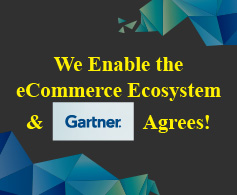

The Golden Version Of Truth And Why Your Company Needs It
The success of any enterprise depends on how they leverage their data. That’s why, over 70% of companies are planning on implementing Business Intelligence, Data stewardship rules, Master Data Management (MDM) and Analytics.(Source: The Hackett Group)
Why Does Your Company Need The Golden Version Of Truth?
The golden version of truth is a single, well-defined version of all the data entities in an organizational ecosystem.
Any organization, especially a retail or eCommerce enterprise gathers data from various sources and systems such as Customers, Products, Locations, Finance, and Employees. The domain type can be varied as per a company’s industry orientation and business model. The same data is promoted through various business channels like online & offline stores, and different media channels etc. in the case of a retailer.
Master Data Management manages the data coming from various sources and channels– creating a single “golden” version of truth which allows an enterprise to link all its critical data to one file, called a master file.
This provides a common point of reference, streamlining data sharing across the enterprise.
Our MDM Solution provides you –
- Multi-domain MDM to help maintain a single view of all your materials, products, customers, sellers/vendor, and other data sets and derive relationships
- Accurate product data to differentiate your business and provide customers with a dynamic and personalized shopping experience.
- A platform to define the master catalog of validated, high-quality unique products across various systems and the organization’s information supply chain.
- Synchronized products, sellers, materials and customers data across systems, applications, and channels
- MDG (Master Data Governance) solution to provide an effective mechanism for Data Stewardship. Workflow and Data Governance to manage and author data.
- Data integration to combine data with multiple formats and attributes from disparate data sources to gain a single unified view of all your data.
- High-quality data for quality decision making.
Get A Demo Today!
Any tips or comments for us? Leave them in the section below –
Read More